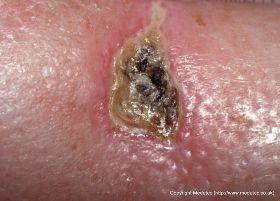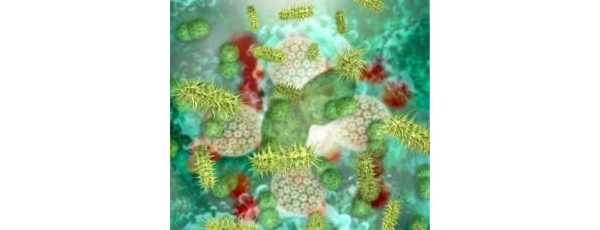Causes and Treatment of Venous Insufficiency Ulcers
May 14, 2015
Lower extremity venous insufficiency ulcers represent approximately 80% of the leg ulcers typically seen in wound care facilities. The following statistics help to bring home the seriousness and chronicity of this common health problem:
- Healing time for venous insufficiency ulcers averages 24 weeks
- Approximately 15% of these ulcers will never heal
- In 15 to 71% of cases of venous insufficiency ulcers, the ulcers represent a recurrent lesion
- It is estimated that the cost of treating venous insufficiency ulcers is 1 to 5 billion dollars every year
What Causes Venous Insufficiency Ulcers?
There are two important (and sometimes indistinguishable) causes of venous insufficiency ulcers. One half to two-thirds of venous insufficiency ulcers result from progressive disease of the leg veins. The course of such disease is predictable: it starts with the development of varicose veins caused by refluxing of blood within the veins due to incompetent valvular structures. These varicosities may cause variable swelling and discomfort. As disease progresses, skin changes occur (hemosideran staining and dermal and subcutaneous thickening and scarring) which eventually lead to the formation of a venous insufficiency ulcer. The course of the disease often culminates in ulcer formation in patients in their 60s and 70s.
Approximately one-third to one-half of venous insufficiency ulcers occur after the patient experiences DVT (deep vein thrombosis). DVTs may cause the process of ulcer formation to occur more quickly than in primary venous insufficiency as described above. Patients who have had a DVT may also present with hemosiderin staining, swelling and discomfort, making it difficult to distinguish post-phlebotic ulcer formation from ulcer formation stemming from venous insufficiency.
How are Venous Insufficiency Ulcers Treated?
Compression Therapy
Compression therapy is standard in healing venous insufficiency ulcers; however, before compression therapy is begun, arterial and venous circulation should be evaluated thoroughly to ensure that compression therapy is safe. This can be done by measuring ABIs (ankle brachial pressure index) or by Doppler studies of the lower extremities. Ace wraps are one simple method of compression that can be used, and offers the advantage of ease of application for some patients. Unna boots, which provide compression and wound care together, may also be used. In addition, patients may be measured and fitted for elastic compression stockings. These are commonly used, but may be difficult for some patients to don and doff.
Wound Treatment
The following wound preparations may be recommended:
- Topical or systemic antibiotic therapy for wounds that are infected
- Debridement of exudates and fibrous tissue to stimulate the growth of new epithelium
- Absorbent dressings for heavily draining ulcers
- Acetic acid
- Silver nitrate dressings
- Calcium alginate dressings
- Proteolytic enzyme agents
- Synthetic occlusive dressings
Moist wound healing is the key to healing venous insufficiency ulcers, facilitating epidermis formation over moist granulation tissue.
Other Treatments
When ulcers fail to heal despite aggressive wound treatment and compression, such as hyperbaric oxygen treatment, skin grafting and systemic therapy with Pentoxyfylline, which promotes blood flow to areas with reduced blood flow (ischemia).
Venous insufficiency ulcers represent a challenge to healthcare professionals who care for patients with these wounds. A multi-pronged approach is often necessary, including scrupulous wound care, compression therapy and referral to a surgeon when necessary for chronic non-healing wounds.
Sources
Beylin, M. (2004). Treating venous stasis ulcers in the lower extremity. Podiatry Today, 10 (17). http://www.podiatrytoday.com/article/3038
Cleveland Clinic. Lower Extremity (Leg and Foot) Ulcers. Cleveland Clinic. http://my.clevelandclinic.org/heart/disorders/vascular/legfootulcer.aspx. Updated November 2010. Accessed May 14, 2015.
Kistner, R., Shafritz, R., Stark, K., & Warriner, R. (2010). Emerging treatment options for venous ulceration in today’s wound care practice. Ostomy Wound Management, 56 (5), pg. 1-11.
http://www.o-wm.com/content/emerging-treatment-options-venous-ulceration-today%E2%80%99s-wound-care-practice-0
Image Credit: Medetec (www.medetec.co.uk)
Editor's Note: This article was originally published on February 17, 2011 and has been updated for accuracy and comprehension.
About The Author
Laurie Swezey RN, BSN, CWOCN, CWS, FACCWS is a Certified Wound Therapist and enterostomal therapist, founder and president of WoundEducators.com, and advocate of incorporating digital and computer technology into the field of wound care.
The views and opinions expressed in this blog are solely those of the author, and do not represent the views of WoundSource, HMP Global, its affiliates, or subsidiary companies.












Follow WoundSource
Tweets by WoundSource